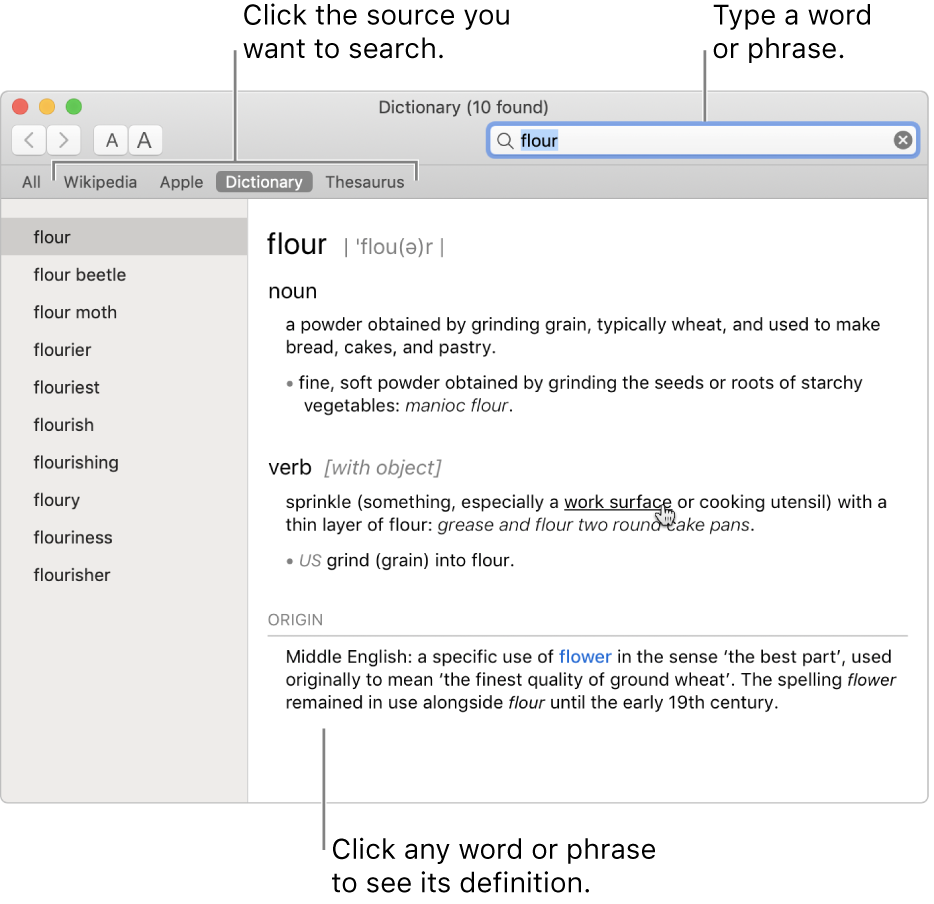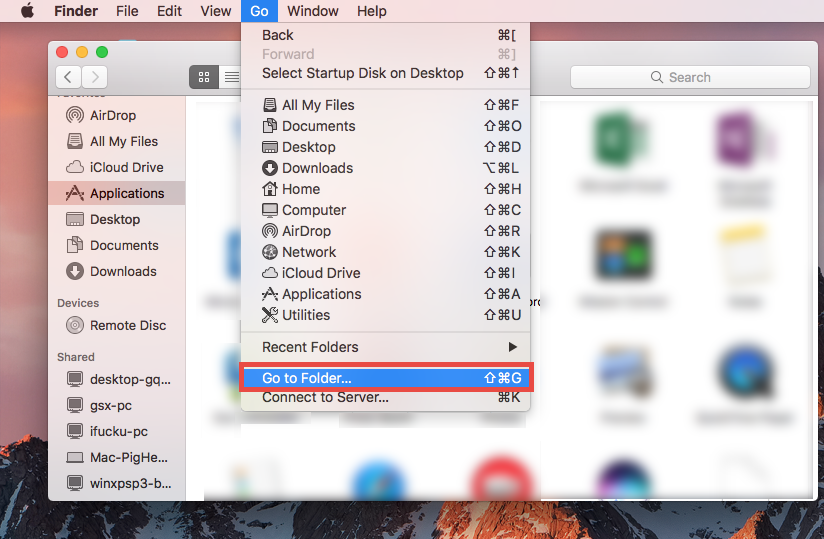- How To Look Up Keywords On Quizlet
- How To Find A Word On Mac
- How To Search Up Words On Mac
- How To Search For Words On Mac In Articles
To search by file type, use the word “kind” and the file type. For example, type “kind:folders” or “kind:audio”. To show the location of a file on your Mac, choose the file from the results list, then press and hold Command. The file’s location appears at the bottom of the preview. To open the file’s location, press Command-R. Search for notes in OneNote for Mac. To search in OneNote for Mac, do the following: On the navigation bar on the left, click the Search button. To begin searching, start typing a word or a phrase into the Search box. As you type, OneNote displays a list of where the text you’ve typed has been found. The more you type, the more specific. Add the Office for Mac app icon to the dock. To add to the dock, drag the app icon from the Launchpad or the Applications folder. The following steps demonstrates how to drag the icons from the Applications folder. Go to Finder Applications and open the Office app you want. In the Dock, Control+click or right-click the app icon and choose Options Keep in Dock. Write with confidence, knowing intelligent technology can help with spelling, grammar and even stylistic writing suggestions. With tools at your fingertips, easily go from pen and paper to digital inking and edit intuitively. Get all the information you need as you write without leaving Word. Mar 29, 2019 How to Search for a Word on a Webpage. Nearly every web browser comes with a Find tool, which allows you to scan the page for matching words or phrases. You can also use Google's advanced search operators to perform a search for a word. Using the Option or Alt key on a Mac. If you're using a UK keyboard, chances are this is called the Alt key so it's no wonder most people don't know where it is. The Alt (aka Option) key can be found between Control and Command. It has an icon that looks like a slope and a dip with a line above it.
Home > Articles > Apple > Operating Systems
␡- Create and Save a TextEdit Document
Can anyone telll me if it's possible to search for spefic words within a document or website. When I search for specific items in a search engine and the websites come up, I want to be able to search for the words when I click on the search engine results.
This chapter is from the book
This chapter is from the book
TextEdit is a small yet surprisingly powerful word processor. Use it to write memos, letters, diaries, novels, grocery lists, memoirs, or any other text document. You can create simple tables and automatically numbered or bulleted lists, add shadows to type, insert images, search and replace text, and more. But it’s not a full-blown word processor such as Apple’s Pages (check the App Store in your Dock) or MarinerWrite (MarinerSoftware.com) or the sweet, new Pagehand (Pagehand.com). Although TextEdit can’t do all the fancy things a big word processor can, it’s excellent for many projects.
If you’ve never used a word processor before and you don’t know how to open an application and save files, enter text, select text for formatting, cut/copy and paste, etc., please read The Little Mac Book first! This chapter assumes you know the basics of working in a word processor.
Create and Save a TextEdit Document
Open TextEdit (it’s in your Applications folder and in Launchpad). Then from its File menu, choose “New.” A blank window opens for you to start typing.


Choose how you want to see the document: From the Format menu, choose “Wrap to Window” (below, left) or “Wrap to Page” (below, right).
Save your document as usual (from the File menu, choose “Save...” give it a name, and store it in a folder where you’ll find it again). As you continue to work on your TextEdit document, an “Edited” button appears in the top-right corner of the document window. This is a visual clue that the document has been changed and you might want to save the changes (press Command S).
You can click that “Edited” button or triangle to choose from several options:
- Lock prevents further changes. If you try to type, you get an option to Unlock it. This is not a secure lock—anyone can click the Unlock button.
- Revert to Last Saved Version gives you the option to revert to the last time it was saved (either by you or by TextEdit), or you can revert to an older version, as explained on the opposite page.
- Browse All Versions—see the opposite page.
AutoSave and versions
TextEdit automatically saves your document every hour as you work on it, as well as when you close it (it doesn’t ask—it just saves). In addition, you can (and should) save more often (press Command S).
How To Look Up Keywords On Quizlet
As soon as you save and name a document, TextEdit keeps track of all previous versions of that document; that is, every time you save or TextEdit saves, a new version is stored. You can return to any of these versions, as explained below.
To manually save the current version, go to the File menu and choose “Save a Version,” or press Command S.
To save a document with another name or in another file format, go to the File menu and choose “Duplicate.” Save this new file with a new name.
Restore a previous version
To turn to a previous version of the document, click the top-right corner to get the menu shown below. Choose “Browse All Versions....” All previous versions of your document appear, as shown at the bottom of this page.
Click on the title bars to go back in time to previous versions, or click in the vertical timeline to view various versions. When you find the one you want, click the “Restore” button at the bottom of the screen.
Related Resources

- Book $55.99
- Book $55.99
- Book $55.99
How To Find A Word On Mac
Spotlight is a desktop search utility that helps you search your Mac files. Spotlight enables you to easily lay your hands on the documents, pictures, e-mail messages, and other programs you need at any particular moment. Over time, Mac users accumulate thousands of photos, songs, school reports, work projects, contacts, calendar entries, and you name it. Spotlight helps you locate them in a blink, giving out search results before you finish typing.
What’s even better is that Spotlight can uncover material within documents and files. That’s incredibly useful if you can’t remember what you named a file. And as long as your machine has Leopard, Spotlight lets you search inside the files of any other Mac with Leopard on your network, provided sharing is turned on.
To use Spotlight:
1Click the magnifying glass icon in the upper-right corner of the menu bar or press Command and the spacebar simultaneously.
Select the box under Spotlight in System Preferences if the shortcut doesn’t work. The Spotlight search box appears.
How To Search Up Words On Mac
2Enter a word or phrase you want to search for.
How To Search For Words On Mac In Articles
The instant you type the first letter, a window shows up with what Spotlight considers the most likely search matches. The search is immediately refined as you type extra keystrokes. Searching is so fast you’ll see results more quickly than it takes you to read this sentence.